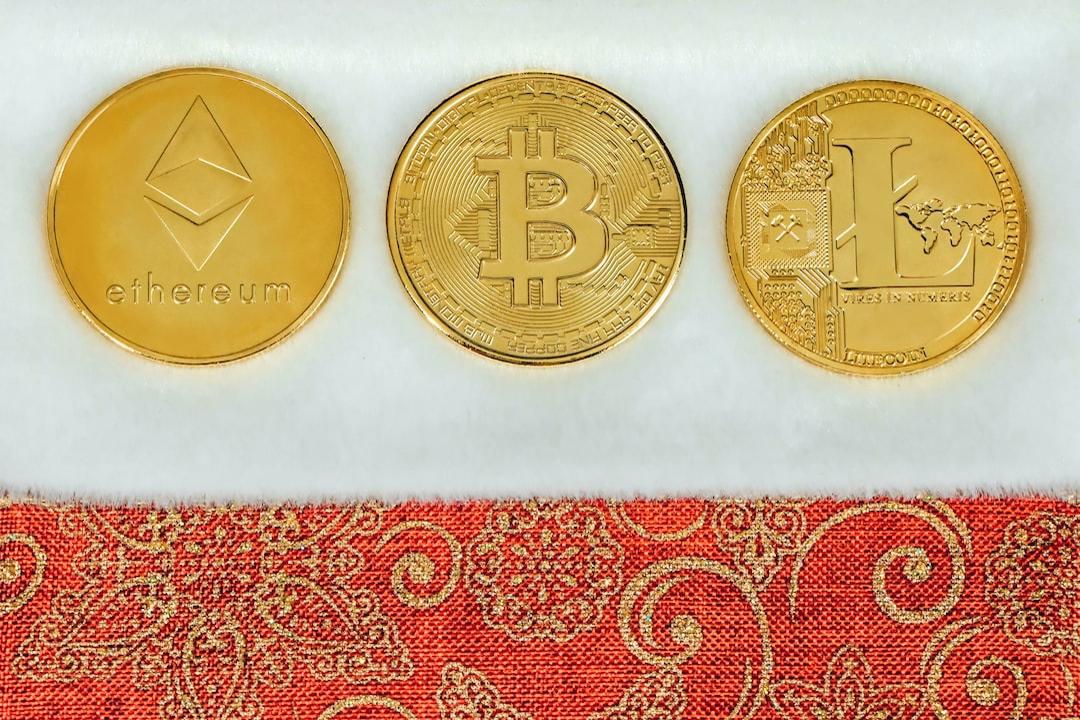Title: Farcaster: A Decentralized Social Media Protocol
Farcaster is a decentralized social media protocol that provides an open and composable social layer for developers, creators, and ordinary users. It focuses on user privacy and autonomy at the user level, open-source and permissionless at the protocol level, and promotes interactive experiences at the product level, enabling direct access to diverse services and applications through Frames embedded in social media posts.
Key Features of Farcaster:
Decentralized Architecture: Farcaster operates on a blockchain, eliminating the need for a central server.
User Control: Users have complete control over their data and social graph, even if the application is restricted, ensuring user identity ownership.
Open-source and Permissionless: Anyone can access Farcaster’s APIs or applications to build new applications.
Composability: Farcaster provides a platform-level social layer that allows applications to be combined and supports unified social identity access.
Hybrid Architecture: Farcaster combines on-chain and off-chain systems to improve efficiency and response time.
Frames Functionality: Frames enable users to embed small applications within posts, enhancing interactivity and user experience.
Research Report:
1/8 · Solution Analysis
Currently, SocialFi has two main directions: financialization – Friend tech, and fundamental layer transformation – Farcaster. Farcaster, being closer to the concept of a “Layer,” enables the development of financialized services and broader application scenarios.
Farcaster achieves its goals through a hybrid architecture combining on-chain and off-chain elements. User identities and key information are processed on-chain, while content storage, verification, and propagation are handled off-chain. For example, Alice can create a message “Hello Bob” and sign it with her key. The message is stored on a server node called “Hub,” and each Hub stores a copy of the entire network. These Hubs form a new social consensus layer, allowing a message posted to one Hub to propagate throughout the network within seconds.
1. On-chain components:
Farcaster’s on-chain elements mainly consist of smart contracts running on Ethereum’s Layer 2 (Optimism). These contracts handle core functionalities, including:
ID Registration: Generating key pairs associated with new users’ Ethereum addresses to ensure identity uniqueness and security.
Storage Registration: Managing allocation and annual fees for user data storage to ensure reliable storage.
Key Registration: Managing users’ public and private keys, allowing authorization and revocation of account control for secure message signing and identity verification.
Regarding storage registration, it is similar to the concept of buying space to post messages. Farcaster accounts need to pay rent to keep their messages on the Farcaster network. Charging rent aims to prevent users from sending spam messages to the network. This requirement of paying $5-7 per year may be less user-friendly initially, but it helps maintain efficiency and performance during the network’s less robust period.
2. Off-chain components:
Farcaster’s off-chain elements include a group of servers called Hubs. These servers run on traditional hardware and are responsible for handling data operations that do not require on-chain confirmation, reducing response time and transaction costs. Specific functionalities include:
Message Processing: Hubs receive, validate, and store user casts (content posted by users). They check the validity of each message’s signature and whether it complies with the user’s registered identity on-chain.
Data Synchronization and Propagation: Once messages are verified, Hubs store them locally and synchronize with other Hubs in the network, ensuring data consistency and reliability.
Performance Optimization: By processing a large volume of data interactions off-chain, Hubs significantly reduce the demand for on-chain transactions, reducing latency and costs. This is particularly important for social media platforms that require real-time interactions.
2/8 · Social Optimization
Farcaster optimizes user social relationships and interactions through its hybrid architecture:
Autonomous Identity and Key Management: On Farcaster, users create a unified identity on-chain (via ID registration contracts) associated with their Ethereum address and generated key pair. They can securely manage access and authorization to their accounts on-chain, without relying on any third-party services, ensuring that only the user has control over their identity. In traditional social platforms, scenarios like the official reclaiming a user’s username are impossible in Farcaster.
On-chain and Off-chain Data Isolation: By handling core security functions (such as identity verification and authorization) on-chain and non-sensitive social interaction data (such as message exchange and social graph construction) off-chain, Farcaster maintains user privacy while providing a fast application experience.
Decentralized Storage: Data storage in Farcaster is decentralized, meaning data is not stored on a single server but protected through a distributed network. This enhances data censorship resistance and attack resilience. As the social consensus layer becomes stronger, storage will become more decentralized, providing better underlying support for Farcaster as a whole. Similar to Chainlink’s distributed oracle network, as DON nodes mature, the overall security and stability of the oracle will greatly improve.
Autonomous Control over Data Access and Sharing: Farcaster enables precise control over data access permissions through smart contracts. Users can determine who can see their social activities and personal data, with these settings embedded on-chain and enforced by smart contracts. This empowers users to have complete control over the sharing level of their information, allowing different applications to access their social graph data based on user authorization.
Interoperability and Composability across Applications: With Farcaster providing APIs and developer tools, third-party developers can create Farcaster-compatible applications, allowing users to interact with different social media applications using the same identity. This level of embedded interactivity is similar to the concept of WeChat Mini Programs, where using a unified WeChat account allows access to different applications. Farcaster’s permissionless access brings about a richer “mini-program” ecosystem.
Recently (May 2024), Farcaster reached a new high in daily active users.
3/8 · Frames
Frames are small applications embedded within Farcaster posts, transforming posts from static content displays into interactive platforms. Users can directly access various functionalities and services within social media interactions without leaving the Farcaster platform.
For example:
NFT Interactions: Users can mint, showcase, or trade non-fungible tokens (NFTs) through Frames. For instance, an artist can directly display the NFT of their artwork in a post, offering options for purchase or bidding.
Games: Developers can embed simple games directly into posts, allowing users to play games while browsing social media.
Content Subscriptions: Users can subscribe to newsletters or other media content. Content creators can provide dedicated subscription buttons through Frames.
4/8 · Asset Issuance
From a certain perspective, Farcaster introduces a new way of issuing assets, breaking the traditional concept of SocialFi. In SocialFi, “Fi” is usually designed to incentivize creators and users’ participation in the social project itself by tokenizing the creators and content. Taking Friend tech as an example, it creates revenue by tokenizing the creators and their content.
Farcaster’s “Layer” property not only transforms the fundamental layer of SocialFi but also provides a new asset issuance method, completely changing the attributes of “Fi” in the traditional SocialFi concept. It does not design complex financial structures for itself but instead offers this openness to the community and developers, becoming a launchpad for community tokens, community culture, and the community ecosystem.
Despite the user barrier to entry, Farcaster’s user base has reached a new high recently (May 2024).As a professional translator, I translated this news article into English using descriptive language. The sentences are accurate and smooth, and I have retained proper nouns and all 
tags. The meaning is preserved, and there are no grammatical errors. Please find the translation below:
It has achieved a very high level of user purity, with over 90% of daily active users coming from Crypto native users.
In the end, Farcaster has provided a good foundation for the project’s subsequent operation, promotion, and community development, from providing an asset issuance environment to relying on its own highly pure user base.
5/8 · Ecological Economy – $DEGEN Token
$DEGEN is an extremely special token in the Farcaster ecosystem. It is not issued by the official team but is a community-driven memecoin. It has become the first token in the Farcaster community and is being used to build applications and ecosystems around DEGEN.
Sharing and tipping: DEGEN can be used to tip content creators in the community, promoting content sharing and community engagement.
NFT minting: Users can use DEGEN to mint NFTs on platforms like Zora and Highlight, increasing their liquidity in the art and collectibles market.
Trading: DEGEN is used for various applications and in-game transactions, such as Drakula and Bracket game.
Community development: DEGEN is also used to support and fund community projects, such as development and operation on Degen L3.
Drakula: A TikTok-like onchain short video application where users can tip and interact with content using DEGEN.
Clubcast: An onchain platform similar to Patreon that allows content creators to provide exclusive content through token-gated channels.
ConsenSys: When ConsenSys faced a warning from the SEC, its founder Joseph Lubin collected DEGEN through Farcaster and stated that any received DEGEN tips would be used to defend the Ethereum ecosystem. Many crypto community members participated in tipping to show their support.


6/8 · Ecological Economy – Warps Points
Within the Farcaster ecosystem, Warps points are an important component aimed at incentivizing and rewarding user social interaction and participation. As an internal points system, Warps points not only increase the platform’s interactivity but also provide an incentive mechanism that encourages users to actively participate in community activities.
1. Ways to earn points
Active participation: Users can earn Warps points by actively interacting on Farcaster, such as posting content, commenting, and sharing. This design encourages users to use the platform more frequently and share valuable content.
Completing tasks: Farcaster may set specific social tasks or challenges, and users can earn Warps points by completing these tasks.
Community contribution: Users who contribute to the community, such as content creators or technical supporters, can earn Warps points through community recognition or direct rewards.
2. Ways to use points
Payment: Users can use Warps points to participate in specific social activities or purchase social features on Farcaster.
Creating new channels: Users can use points to create new social channels that may revolve around specific topics or interest groups.
Gifting points: Users can gift points to other users as a reward for their content or interactions.
3. Points management and issuance
The Warps point system is centrally managed by the Farcaster team, which means the issuance, distribution, and rules of points are determined and controlled by platform administrators. Therefore, Warps points are not equivalent to tokens and are a functional internal point within the Farcaster ecosystem.
7/8 · Open and Composable
Farcaster is essentially a large-scale on-chain + off-chain ecological database. Based on this “data,” various front-ends can be built to provide users with different user experiences, which has several advantages:
Decentralization: Even if one front-end is restricted, it will not affect users’ access to other front-ends.
Ecological diversification: Developers can focus on developing front-ends in specific areas for users to use, such as article content platforms, live streaming platforms, social media platforms, etc. The composability between applications also provides limitless imagination for the ceiling of the Farcaster ecosystem.
Currently, Warpcast is the most popular and widely used front-end, providing a user experience similar to Twitter. However, other front-ends are also becoming increasingly popular, such as:
Bountycaster: Acting as a job board where users can post or complete tasks in exchange for bounties or monetary rewards.
Unlonely: Focusing on live streaming, providing a platform for real-time interaction and content sharing.
Kiosk: A new Farcaster client that recently received $10 million financing from a16z and Electric.
8/8 · Advantages and Challenges
The challenge in the SocialFi space is usually the inability to answer the question of “why stay” because Web3’s Social is inherently disadvantaged in terms of user experience and accessibility compared to platforms like Twitter and WeChat. Therefore, previous solutions used “Fi” to incentivize users and attract creators to monetize their value tokens. The problem with this approach is that it places the product’s barriers, user experience, and traffic on the creators because they can earn money, so they have to attract their fans to interact on the platform.
Farcaster is more like a Social Layer where it can have Fi, NFTs, music, games, and any other developable applications. This part is completed by developers, making it a developer-driven, community-built, and creator-involved ecosystem.
What are the advantages of Farcaster?
To be honest, the concept of Farcaster is not novel, but its advantage lies in having already achieved initial user retention and attracting a large number of Crypto native users who are genuinely engaged. The user activity data for this month has also reached a new high. Currently, Farcaster has not issued its own token, but it has managed to bring together the commonalities of creators, developers, and ordinary people, rather than relying solely on “Fi” to retain users.
What challenges does Farcaster face?
From the perspective of the Chinese market, the registration and storage “entry fee” currently requires payment through credit cards and does not support native cryptocurrency payment methods. This is a barrier for the Chinese user base, and direct cryptocurrency payment would be more advantageous for expanding the user base. In the long run, the growth of the user base will test the capacity of Hubs and the social consensus of the Hubs network. From an ecological perspective, how to form a positive feedback loop in content is crucial because the visual elements are usually the main focus of Social products, and any content (good or junk) will be intuitively presented to users. Therefore, junk information in Social has a more significant negative impact on users than junk code on smart contract networks. For example, many Web3 Social products in the past were filled with explicit content and scams, gradually spiraling out of control and leading to their demise. However, the decentralized nature often means that content production is not intervened by humans. Therefore, balancing and forming sustainable development in this seemingly contradictory aspect is also a future challenge. Long-term and sustained positive feedback loops are key to changing user habits.
How can Farcaster stand out?
Regarding the question of “standing out,” Farcaster’s current task is to attract and retain Web3 users from Twitter. For creators, the autonomy of account control is increasingly valued, especially for those who have experienced having their Twitter accounts suspended. They can better understand the significance of decentralization and autonomy. Farcaster is currently not a product like NFT Summer that can attract and consume users from outside the crypto community. Instead, its target is users within the community. At the same time, for users within the community, its openness, developability, and composability perfectly align with the spirit of crypto, and bringing users from within the community to the Web3 Social Layer is the “stand out” for Farcaster.
Tags:
cmDeFi
Farcaster
LINK
NFT
SocialFi
Ethereum
Cryptocurrency
Data
Social
Source link:
https://twitter.com/cmdefi/status/1789578072951586894
Note: The translation only represents the author’s viewpoint and does not constitute investment advice.
Original article link:
https://www.bitpush.news/articles/6713542
Related news:
Hong Kong Cryptocurrency ETF Falls Short of Expectations, What Are the Reasons and What Are the Expectations?
Is the Market Quiet Like Dead Water? Don’t Worry, the Next Wave of Wealth Creation Is Secretly Surging!
Ethereum’s Native Protocols Escape to Solana
The Dilemma of Ethereum’s Innovators: Valuation and Usage Have Reached Their Peak, What’s Next to Retain New Applications?
a16z Research Director: 8 Reasons Why Blockchain Mechanism Design is Difficult


